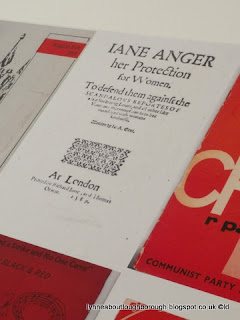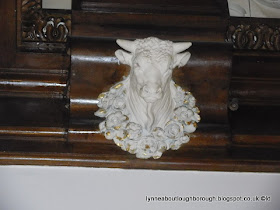If you were out and about around the parish church area of Loughborough on Tuesday evening you might have encountered a couple of groups of folk having a guided tour of that area of town. There really is a lot to show people at this end of town, much more than can be covered in the time available!
I hope you made it to the talk in the public library on Thursday evening, a talk delivered by Stuart Bailey, Chair of the Leicester Civic Society. This was a fascinating insight into the work of the Civic Society, and their campaigns to protect some of Leicester's heritage. Of course, they are not always successful, but a side-effect of their campaigns, successful or otherwise is that there is now a rich heritage of photographs of buildings, before demolition, before refurbishment, and afterwards. There are a number of people in Loughborough who would like to [re-]form a similar society for our town: if you're interested, do get in touch.
On Saturday there was an event taking place across many venues in Loughborough, celebrating the "rich history and radical traditions of the political pamphlet". The event actually started on Friday, with a full day conference, being followed by the opening of the accompanying exhibition in the Charnwood Museum. Pictures at an exhibition:
Saturday saw Queen's Park, Charnwood Museum and the public library being venues for workshops, stalls, zine-making, and badge-making, amongst other things. I wondered around the beautiful Queen's Park, and spoke to a number of stallholders. Here's some pics:
This week also seems to be the week of the Spring newsletters, and several of these have popped through my letterbox over the last few days.
I was also lucky enough to receive a copy of the book produced as part of the Charnwood Great War Centenary Project, which contains a huge amount of fascinating information about the town of Loughborough, about those who gave their lives, and the Zeppelin raids on the town, which I very much look forward to reading.
I would say I am looking forward to another busy week this coming week, but actually, I feel I could do with a rest - or at least a bit more time to investigate the heritage of our lovely town!
You are welcome to quote passages from any of my posts, with appropriate credit. The correct citation for this looks as follow:
Dyer, Lynne (2017). Pamphlet Day and newsletter time. Available from: http://lynneaboutloughborough.blogspot.com/2017/05/pamphlet-day-and-newsletter-time.html [Accessed 28 May 2017]
Take down policy:
I post no pictures that are not my own, unless I have express permission so to do. All text is my own, and not copied from any other information sources, printed or electronic, unless identified and credited as such. If you find I have posted something in contravention of these statements, or if there are photographs of you which you would prefer not to be here, please contact me at the address listed on the About Me page, and I will remove these.
Thank you for reading this blog.
Lynne


















































